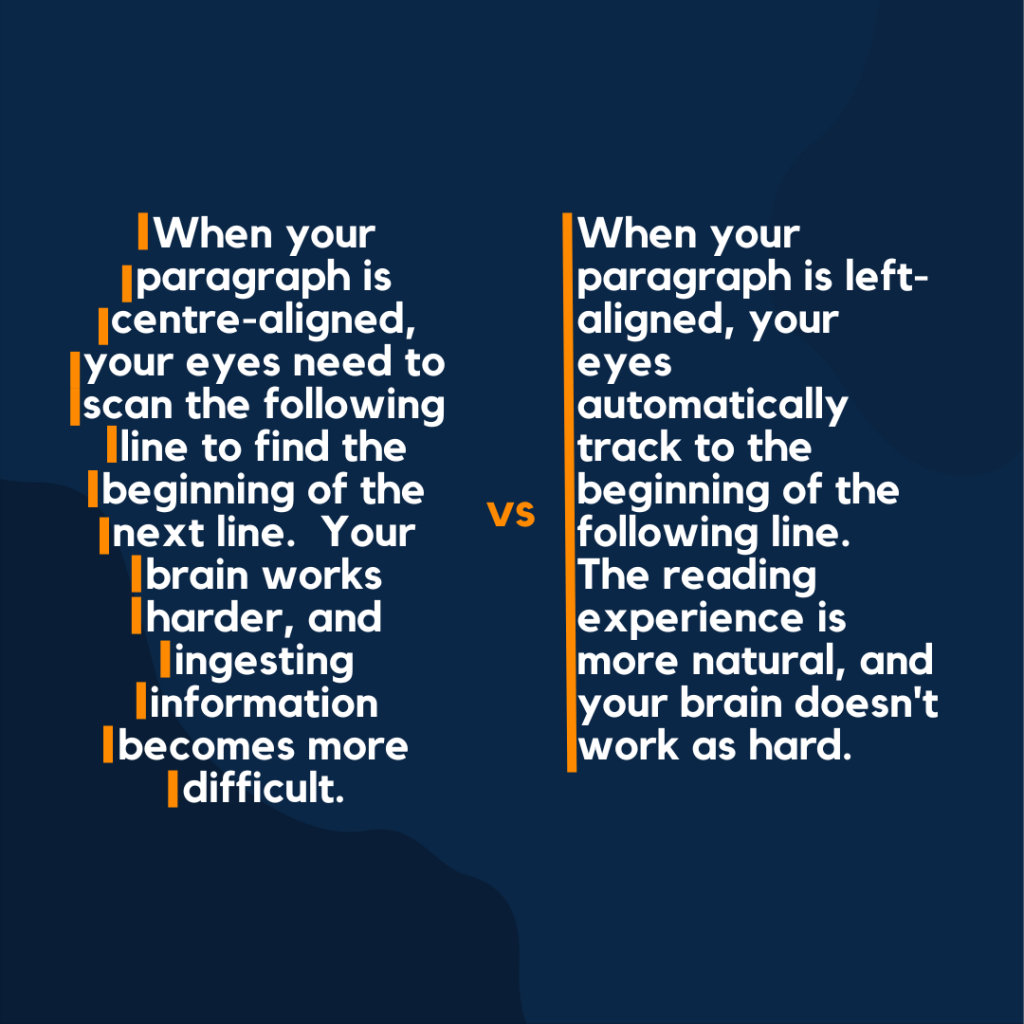Yes, yes, it does.
It all comes down to two things: How our eyes track words and the message you’re trying to send.

Left Aligned Text
This is the fundamental alignment we encounter everywhere – in letters, on websites, and within the pages of books.
Left-aligned text represents the most organic way to read because, as we reach the end of a line, our eyes seamlessly transition to the beginning of the next. The flow remains uninterrupted, resulting in a reading experience that is smooth and significantly easier to comprehend.
Centred Aligned Text
In websites and email newsletters, centred alignment takes the stage. Centred alignment excels with shorter sentences, providing a visually striking effect that makes the text stand out. This can be particularly advantageous when you want to draw attention to key points or create a sense of emphasis.
However, the caveat lies in its application to longer paragraphs. Reading becomes more challenging as your eyes must readjust with each new line. The centrality that brings attention can also introduce a degree of distraction, especially when dealing with extensive content.
So what to use?
Ultimately, the choice between left and centred alignment depends on the nature of your content. Left alignment ensures a seamless and comfortable reading experience for longer, more narrative-driven pieces.
On the other hand, centred alignment can be a powerful tool if you’re aiming for visual impact with concise, impactful statements.
There is no right or wrong when creating text content. It all comes down to personal preference and your audience. If your audience loves your text in the centre, then by all means, go for it!